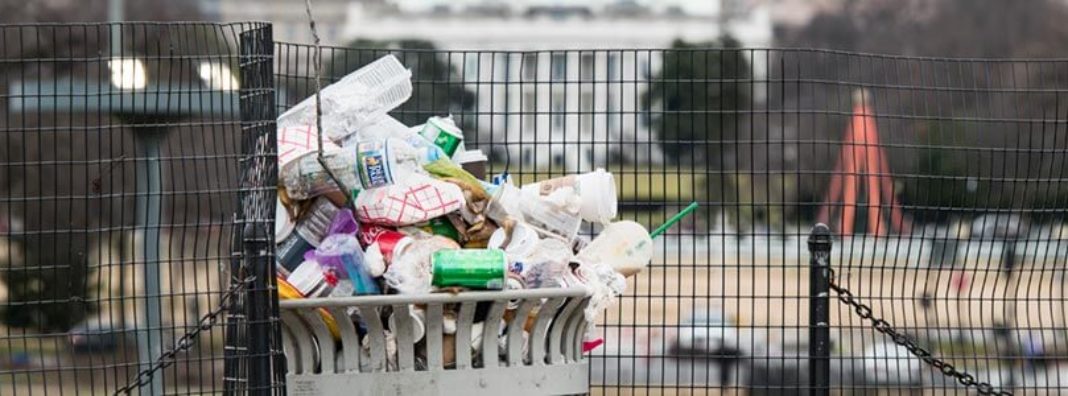
As the government shutdown drags on, the fallout of political bickering in Washington, D.C., is being felt thousands of miles away in America’s beloved national parks.
In place of scenic vistas and natural beauty, visitors instead find dirty restrooms and overflowing trash cans. The National Park Service typically employs about 20,000 people to staff parks in the winter, but 16,000 of those have been furloughed leaving many parks open to the public but without anyone to maintain them.
To address sanitation and safety concerns, acting secretary of the Interior David Bernhardt issued a memorandum this week allowing park managers to use park entry fees to fund essential services like trash cleanup and law enforcement.
Some policymakers called the move illegal because fee funds are legally restricted to deferred maintenance and can’t be used to fund day-to-day operations. Others, like public lands policy expert Shawn Regan, argue that the Federal Lands Recreation Enhancement Act gives the Park Service discretion on how to spend visitor fees and that dipping into these funds now is a sensible move.
Not only is using fees in the short term a promising strategy, but it’s also a solid step towards protecting parks from future funding drama. An even better move would be to decentralize management of national parks so that park managers themselves — not policymakers in Washington — get to decide how to spend visitor fees.
The current shutdown sheds light on fundamental issues in park management. Park managers rely on Congress to set their budget and have limited ability to change the fees they charge to visitors or to decide how those funds are used.
The centralized control of the National Park Service contributes to the deferred maintenance backlog of $11.6 billion, reflecting roads, bridges, tunnels, campgrounds, restrooms and other facilities in need of repair.
Both the backlog and the shutdown show that current management policies aren’t doing enough to protect the 418 parks across the country. The most basic step towards improving management of national parks would be to devolve more power to park managers. Those on the ground see the trails that need clearing and the broken bathrooms first.
It makes sense to give park managers the authority to set fees and even experiment with visitor fees that fluctuate with demand. For example, visitors would likely be willing to pay more to visit Rocky Mountain National Park in the summer than they would in the winter when less terrain can be accessed and many roads are made impassable by snowpack.
Other innovative policy options for protecting national parks include public-private partnerships in which private concessionaires assume responsibility for managing specific parks. The U.S. Forest Service has a decades-long history of using such partnerships.
According to a 2013 study, more than half of Forest Service recreation areas across the country were under “whole-park” concession agreements.
In fact, the Forest Service’s public-private partnerships came about in the 1980s to insulate recreation areas from budgetary cuts handed down by government bodies. Since then, they have been used by federal and state land managers to devolve management to private groups that face a financial incentive to manage parks in a cost-effective and sustainable way.
California was the first state to partner with private groups in 2012 to have sole management responsibilities over five state parks threatened with closure by budgetary cuts.
Besides running entire parks, for-profit companies are playing an important role in preventing harm to the parks from the current shutdown. Because many private businesses rely heavily on access to national parks, they face an incentive to help keep parks open.
In Yellowstone, for example, most roads into the park are closed during the winter, so local businesses offer snowmobile rides to the park’s key attractions. The government shutdown furloughed many employees and stopped maintaining snowmobile trails in the park.
To avoid losing revenue, local businesses came together to pay otherwise furloughed park service employees about $7,500 per day to groom the roads needed to keep their tours running as scheduled. These recreation businesses are also paying their own employees to clean bathrooms and pick up trash in the park.
Most Forest Service recreation areas are already managed in similar ways to what snowmobiling companies have tried in Yellowstone during the shutdown. After all, no one wants to see America’s most beautiful places overflowing with garbage and crumbling infrastructure.
Luckily, there are plenty of innovative approaches that can be implemented to better manage our national parks and other public lands. Using park fees during the shutdown is a good start, but park managers could do more if policies empowered them to effectively manage their parks.
Additionally, public-private partnerships could help ensure that those managing our parks face the right incentives. Exploring these creative approaches is the best chance we have for ensuring our national parks will be around for future generations to enjoy.



 Daily Caller
Daily Caller